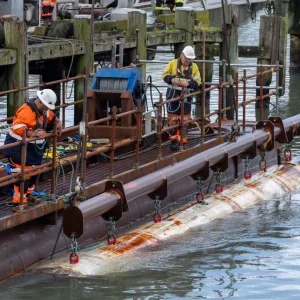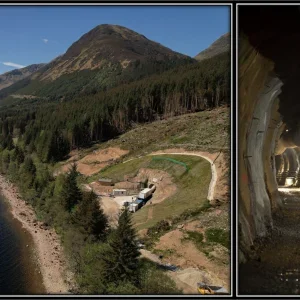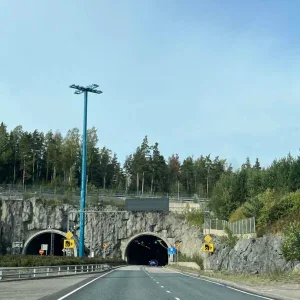A 10m wide, 5m deep hole swallowed two gardens, situated above a tunnel being constructed on Contract 240 of the Channel Tunnel Rail Link (CTRL) in East London, England, on 8 February.
Thirty-five residents of Lavender Street, Stratford, whose houses were close to the collapse, were evacuated and spent the Saturday night in a hotel. Most returned home the following day. Nobody was injured.
The hole was swiftly filled with concrete by the contractor, Costain/Skanska (UK)/Bachy Soletanche JV. Work was then stopped until a further detailed investigation into the cause of the collapse could be carried out.
In a joint statement, project manager, Rail Link Engineering and client, Union Railways said: “Tunnelling will not recommence until CTRL engineers and the safety authorities are satisfied that it is safe to do so.” They also said: “The tunnel has not been affected by the subsidence and is in a safe and stable condition with the ground above fully supported.” It is believed that the tunnel may have intersected one or more disused wells, causing the collapse.
This incident came less than a week after a road collapsed when an articulated lorry reversed into Maryland Works, approximately 100m from the hole in Lavender Street. CTRL confirmed that this collapse was directly above the tunnel alignment, and that engineers had not reported any untoward behaviour in the ground when the TBM passed beneath eight days previously.
A CTRL spokesperson told T&TI that engineers investigating the collapses do not believe the two are connected.
Local residents claimed that engineers surveying the alignment of the CTRL tunnel beneath London were warned of the likelihood of encountering uncharted wells.
Independent health and safety tunnel consultant, John Anderson, pointed out that there are parallels between the collapse at Lavender Street and collapses on tunnels in Athens, Istanbul and Los Angeles. “There is a history of this in London – there were wells on the Jubilee Line… this incident was unpredicted, but was it unpredictable?” he said.
The two collapses occured on the same drive that had passed under the London Underground twin-tube Central Line at the beginning of February. The 8.15m diameter Wirth EPBM bored 4m below the eastbound line and 8m below the westbound line.
At the time of going to press, London Underground Ltd had given permission for the second machine, to proceed with the second crossing of the Central Line. The first machine was still awaiting approval from the UK Health & Safety Executive before continuing.
Contract 240 consists of two 4.7km long, 7.15m i.d. tunnels, bored between the Stratford Box and Barrington Road in Newham. The US$196M contract is being constructed using two Wirth EPBMs, which began tunnelling in September 2002.







